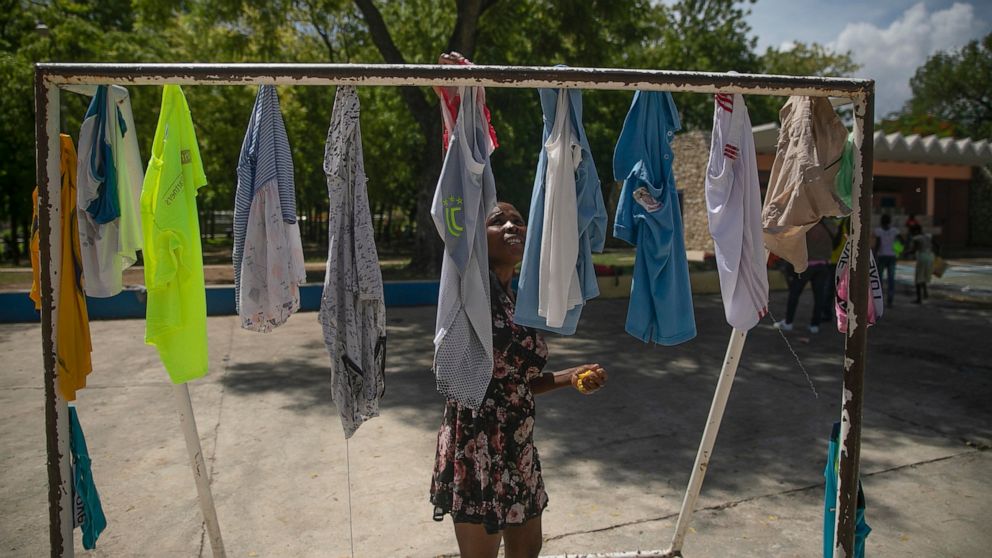“I do not know what number of will come,” EU Residence Affairs Commissioner Ylva Johansson replied on the particular assembly of EU inside ministers in Brussels when requested what inflow of refugees from Ukraine she expects. “I believe we must put together for thousands and thousands.”
By Sunday, 4 days after the Russian assault started, at the very least 200,000 individuals, largely youngsters, ladies and aged males, had entered Poland, in line with the Polish Border Guard. Males thought of match for navy service are presently not allowed to go away Ukraine.
Estimates by the United Nations and refugee organizations put the variety of individuals fleeing the Russian invasion at 4 to 7 million. What number of will then really need to cross Ukraine’s borders relies upon fully on how the navy scenario on this conflict develops. But how lengthy they need or want to remain relies on who wins or ends this conflict. If Russia stops its assaults and withdraws, the households might additionally rapidly return to their fathers, sons and brothers, EU officers imagine.

Refugees from Ukraine have been crossing at land borders of neighboring nations, like Slovakia
Limitless admission this time
What is evident is that the anticipated arrivals will far exceed the so-called “refugee summer time” of 2015, when about 1 million refugees and asylum-seekers arrived in Central Europe, primarily to Germany, from Syria’s conflict zone.
So far, the EU member states haven’t been capable of finding a solidarity-based distribution mechanism for such refugee flows. Legally talking, the states of first entry are liable for processing the asylum purposes. However nations like Poland, Hungary or Austria previously have at instances refused to simply accept asylum-seekers in any respect. Solidarity on the migration concern has been the most important bone of rivalry within the EU. However the scenario now’s fully completely different.
“It is conflict in Europe once more for the primary time, and that’s additionally resulting in a distinct mind-set amongst member states,” German Inside Minister Nancy Faeser mentioned at a gathering together with her European counterparts in Brussels. She sees it as a “complete paradigm shift.”
All refugees from Ukraine are welcome, European Fee President Ursula von der Leyen promised. “Everybody who has to flee Putin’s bombs can be welcomed with open arms.”
Initially, many European nations together with Germany welcomed refugees in 2015, although the temper modified because the numbers grew.
Accepting refugees from third nations
Now, circumstances are completely different as a result of rapid neighbors are fleeing conflict; one thing that Europe not thought potential.
The overwhelming majority of individuals from Ukraine are staying with family or buddies in Poland, Slovakia, Hungary or Romania. Polish authorities say that particular lodging have hardly been tapped — thus far.
There have been stories that individuals from Africa who lived in Ukraine and wished to enter Poland had been harassed or turned away on the border by Polish border guards. A South African International Ministry official tweeted that South African college students had been turned away on the Ukraine-Poland border, whereas African embassy workers are working to assist compatriots enter the nation from Ukraine at Polish border crossings.
In Brussels, Ylva Johansson made it clear that the border was additionally open to individuals from third nations who lived in Ukraine and wished to journey on to their residence nations. “These individuals should be helped. Furthermore, these in want of safety within the EU may also apply for asylum.”
No fence in Poland
As but, there was no want for an official distribution mechanism for refugees from Ukraine: Poland and Ukraine’s different neighboring nations haven’t but submitted any requests to resettle anybody, in line with the German Inside Ministry.
“Poland is taking in refugees and doing it in a superb approach,” Faeser mentioned. “We at the moment are attempting to help Poland logistically.”
All this sounded fairly completely different a couple of weeks in the past, when Poland started constructing fortifications on its border with Belarus to maintain refugees and asylum-seekers from Iraq and Afghanistan, or different migrants, from coming into. The Polish authorities refused to grant asylum to those refugees, partly as a result of Belarusian chief Alexander Lukashenko was reportedly transporting them to the border intentionally, after which leaving many to carry out in a no man’s land for weeks within the chilly.
Now issues are completely different. The EU has no issues with these coming into from Ukraine, as a result of as an everyday rule, Ukrainians can keep within the EU for 90 days with out a visa. “However we should be ready for Day 91,” warned Johansson.
That is why, for the primary time, the EU will use a “short-term mass safety” regulation to increase refugees’ residency standing with out having to undergo advanced asylum procedures. This safety directive, introduced in following the wars within the former Yugoslavia within the Nineties, has existed in 2015 however had not but been utilized.
However for Lithuanian Inside Minister Agne Bilotaite, the EU measures agreed on Sunday don’t go far sufficient. She needs a hard and fast distribution mechanism for refugees from Ukraine, which she thinks the European Fee in Brussels ought to manage. “You additionally want a resettlement mechanism to get the wounded, ladies and youngsters out of Ukraine.” She argued that preparations should be made now for the subsequent weeks. Europe’s inside ministers will meet once more on Thursday.
This text was initially written in German.
















